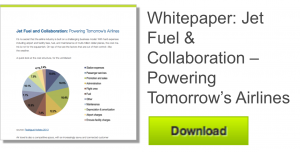Think you want to run an airline? It’s definitely not for the faint-hearted.
The airline industry is one of the toughest business models going. With line items including fuel, maintenance, airport and facility charges, equipment depreciation, etc, the cost structure alone is enough to cause indigestion.
Yet air travel is a massive industry ($40+ billion this year in the US alone) and a vital service. Those who do it well, are doing well. What is their secret, and how can an airline gain a competitive advantage? The answer lies in customer experience.
Like most sectors, the travel industry serves an increasingly connected and savvy customer base, where social media can quickly magnify a bad scenario. And along the service life span there are several key moments where an airline can shape the customer’s perspective.
From ticketing, to check in, to beverage service, to please-return-your-seat-back-to-the upright position, a customer can be affected positively or negatively every step of the way. The key players in this continuum are the flight crews, since they have the most direct contact with flyers. So how to help them better do their jobs?
Airlines, like Cathay Pacific, are empowering their flight crews with an enterprise social network, or ESN. This is a secure, controlled platform, accessible via the web and mobile apps, which allows the crew to have immediate access to key information in the context of their specific roles. What does this mean?
It means that crew members can more easily keep up with the inevitable unexpected flight and gate changes, by simply checking an app on their smartphones. This allows them to more quickly relay this information to anxious travelers, enhancing the customer experience even in moments of adversity.
Speaking of adversity, another area that can help an airline improve their service is customer feedback. The old model required crew members to fill out lengthy feedback forms, reducing the likelihood of an issue ever reaching corporate for anyone to act on it. With ESN, it’s as simple as posting the item to a managed subject on the network.
A private network also allows crew members to keep in touch with each other on a common social wall, fostering a stronger sense of connection and teamwork among people who often don’t spend much time with each other. As an internal communications tool, it also strengthens everyone’s alignment with the brand, making them better brand ambassadors beyond just the “we realize you have a choice” speech.
Air travel may always be a challenging model, and there will always be things that customers are unhappy about—like mom said, you can’t please everyone. But a private social network is a great way to tip the odds in favor of the house. And with these kinds of advantages in place, maybe you really do want to run an airline after all.






